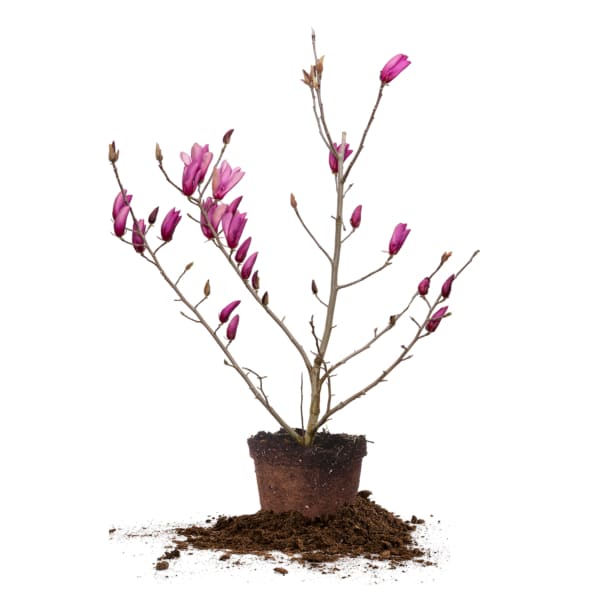How To Plant A Redbud Tree
A redbud tree, with its vibrant, magenta-colored blossoms that appear on the dark stems before the foliage in early spring, creates a relaxing sanctuary right in your front yard. You could spend hours lying under the tree reading a good book or simply gazing at the web of colored flowers spreading out over you. Here’s a guide on how to plant a redbud tree and care for it while it grows into a beautiful mature tree.
Are you thinking about getting one of these for your garden? The best part is, they’re super easy to plant and equally simple to take care of; they’re even drought tolerant. We’ve already nurtured a young plant for you, 4-5 feet tall, so your work is minimal. Instead of raising a vulnerable small tree, you have a young plant that can instantly transplant into your garden and brighten your spring landscape.
The best time to plant your young tree is in early spring or fall. When planting in the Spring you will want to wait until after the last frost to ensure the best possible chance for survival. If you plan to plant your tree in the fall, make sure to plant six weeks before the first frost so that the tree roots can get established.
Most Popular Flowering Trees




Where Is the Best Place To Plant a Redbud Tree?
Native to North America, the Eastern Redbud (Cercis canadensis)is cold hardy to zones 4 to 9. It will easily survive most climates, as long as it’s planted in well-drained soil, and gets a little bit of sunlight every day. Choose a location with full sun or partial shade. The ideal exposure for your redbud is 4 to 8 hours of sunlight every day, with some protection from the bright afternoon sun.Keep a minimum of 6 to 8 feet distance between any structures and the planting site, and a minimum of 3 feet from fences.
Planting Redbud Trees
Beautiful Redbud Pink Flowers Clear the area of any weeds, debris, or grass. Incorporate a 4-inch layer of compost and mix it into the soil to a depth of 1 foot before putting your tree in the hole.Breaking the soil to this depth loosens it and makes it easier for your redbud tree to develop stronger root zones. Check the pH of the soil. While the redbud will do well in most pH levels, it prefers slightly alkaline soil. If your soil isn’t already alkaline, you can amend it with agricultural lime to raise the pH to 7.5.
How to Plant a Redbud Tree
Once you’ve prepared the site, dig a hole thrice the width of the redbud’s root ball. Carefully remove the tree from its original container and place it in the hole. Position it straight and backfill with soil.Water the plant well right after planting it, you may even consider adding a drip line to make watering easier. Spread a 4-inch layer of mulch around the tree, but make sure it doesn’t contact the trunk to prevent rot.
Redbud Tree Care
State Tree of Oklahoma As far as the ongoing care is concerned, your flowering tree won’t bother you at all. Whether you have an Eastern Redbud tree or Forest Pansy Redbud, both are exceptionally easy to maintain. Also check out our WeepingRed Tree 'Ruby Falls'.
Maintain a moist soil, but make sure you don’t overwater. The redbud doesn’t like sitting in waterlogged soil. Ideally, check to see if the top 2 to 3 inches of the soil are dry before you water it.
Prune the redbud tree in the fall, once the blooming ends. Remove any dead, diseased branches, and also the ones that run across one another. If you remove any diseased branches, sterilize the pruning tools before resuming. Also, be sure to clean up the heart-shaped leaves that have fallen and discard them properly.
Apply a slow-release fertilizer each year, in early spring to maintain its health and ensure plenty of blooms. It will also help prevent your tree from diseases and other problems.
If you’re looking for a blast of rosy pink in your garden at springtime each year without the hassle of complicated maintenance, a redbud tree covers it. It’s not just the beautiful display of pink in early spring that the tree is popular for. The changing colors of the heart-shaped foliage with the seasons – blue-green in spring, dark green and purple foliage in summers, and yellow in winters – will leave you mesmerized throughout the year.






















